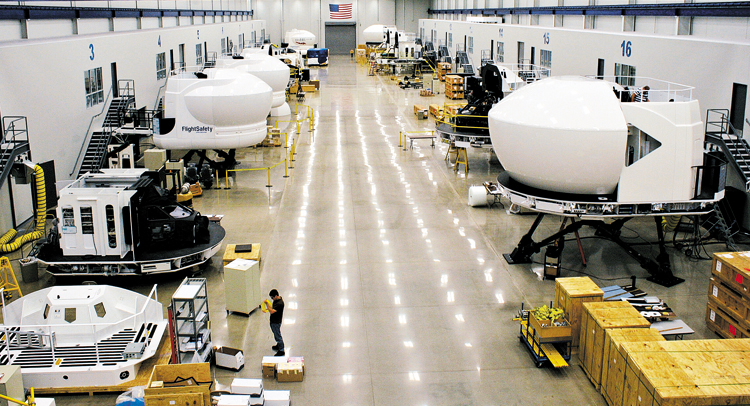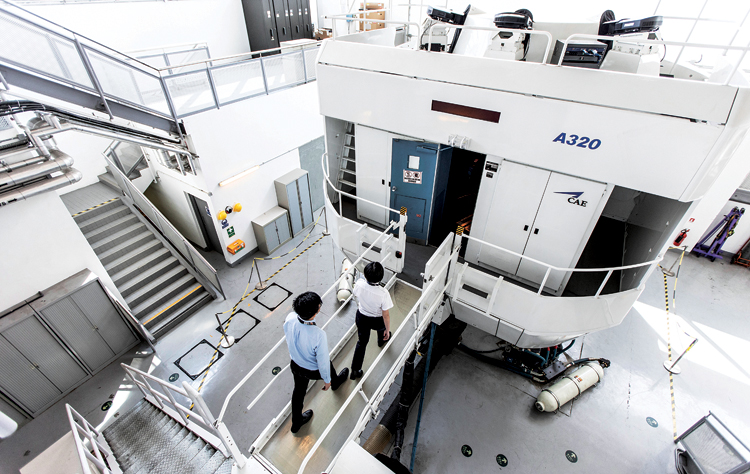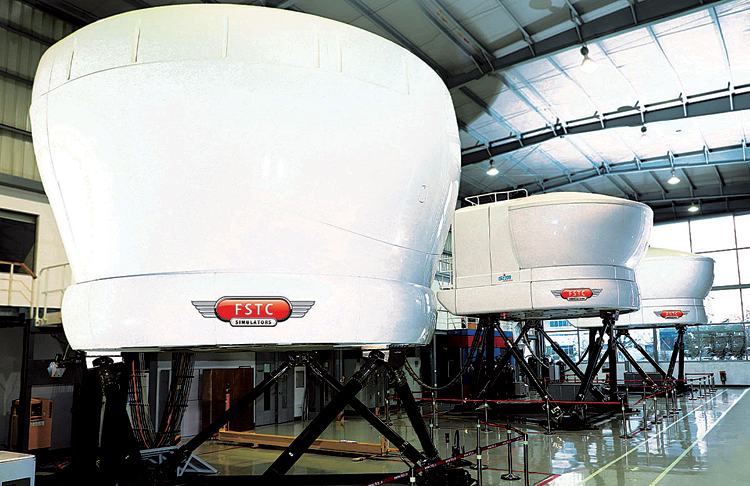INDIAN ARMED FORCES CHIEFS ON OUR RELENTLESS AND FOCUSED PUBLISHING EFFORTS

The insightful articles, inspiring narrations and analytical perspectives presented by the Editorial Team, establish an alluring connect with the reader. My compliments and best wishes to SP Guide Publications.

"Over the past 60 years, the growth of SP Guide Publications has mirrored the rising stature of Indian Navy. Its well-researched and informative magazines on Defence and Aerospace sector have served to shape an educated opinion of our military personnel, policy makers and the public alike. I wish SP's Publication team continued success, fair winds and following seas in all future endeavour!"

Since, its inception in 1964, SP Guide Publications has consistently demonstrated commitment to high-quality journalism in the aerospace and defence sectors, earning a well-deserved reputation as Asia's largest media house in this domain. I wish SP Guide Publications continued success in its pursuit of excellence.
Flight Simulators
There is a growing demand for simulators for commercial, business and regional aircraft, which enable real-life scenario, which can be re-configured or possibly be upgraded to support newer aircraft models and the focus on manufacturing such simulators will drive the growth of the players

The procurement of new aircraft for both commercial and general aviation has seen a growing worldwide pilot demand, which, in turn, has led to the high demand for training aircraft and simulators in flight schools. Although the pandemic had resulted in a drop-in pilot demand, the long-term demand for commercial aircraft pilots remains strong. Many airlines are presently facing pilot shortage, which are affecting their daily operations. The unavailability of trained pilots to cater to the ever-growing demand will generate demand for pilot training globally. Though the COVID-19 pandemic resulted in pilot furloughing in 2020 and 2021, airlines are now focusing on long-term growth strategies and have re-started collaborating with pilot training schools to obtain airline-specific training for the pilots. The civil aviation flight training and simulation market is projected to register a CAGR of over 15 per cent during the forecast period (2022-2027).
SIMULATOR MARKET
The civil aviation flight training and simulation market is moderately fragmented. Leading simulator manufacturer CAE Inc is the global market leader, mainly due to its huge geographical presence and brand image. L3Harris Technologies, TRU Simulation + Training Inc. and FlightSafety International are some of the other prominent players in the market. Simulation & training providers and equipment manufacturers constantly strive to build brand reputation and reach out to across the globe to draw more customers. Flight schools are looking for long-term collaborations with airlines and aircraft operators for pilot training programmes, which may help them generate sustainable revenues for longer durations.
Full Flight Simulator (FFS) replicates a specific type, make, model, or series aircraft. It includes the equipment and computer programmes necessary to represent aircraft operations in ground and flight conditions, a visual system providing an out-of-the-flight deck view, a system that provides cues at leaste quivalent to those of a three-degree-of-freedom motion system, and has the full range of capabilities of the systems installed in the device and the QPS for a specific FFS qualification level (Level A, B, C or D).
Simulator Technology Advances particularly in computer technology during the last twenty years has a major impact in flight simulation
Flight Training Device (FTD) replicates aircraft instruments, equipment, panels, and controls in an open flight deck area or an enclosed aircraft flight deck replica. It includes the equipment and computer programmes necessary to represent aircraft (or set of aircraft) operations inground and flight conditions having the full range of capabilities of the systems installed in the device and the qualification performance standard (QPS) for aspecific FTD qualification level (Level 4, 5 or 6).
Both the FAA and EASA utilise the term FTD to classify certain flight training devices other than FFS’s. EASA has a further classification referred to as an refer to Flight & Navigation Procedures Trainer (FNPT). An example difference between an FTD and FNPT under EASA is an FTD requires a fully enclosed flight deck, whereas a FNPT does not. FAA & EASA FTD “Levels” are not the same.
Flight Training Devices qualification levels:
- EASA FTD Level 1: May lack a visual system, compared to FNPT the aircraft systems must operate correctly based only on pilot inputs without requiring instructor actions.
- EASA FTD Level 2: Visual system with different conditions, cockpit must include other crew stations, controls must replicate movement dynamics.
- EASA FTD Level 3 helicopter only: Model data must be based on validation flights - cannot be generic aerodynamical model, wider field of view.
Full Flight Simulators qualification levels:
- EASA FFS Level A: Motion system with 3 degrees of freedom (pitch, roll, heave).
- EASA FFS Level B: Motion system with all 6 degrees of freedom, modelling ground handling.
- EASA FFS Level C: Simulate different runway conditions, icing, more detailed aerodynamic model.
- EASA FFS Level D: Characteristic vibrations that can be felt in the cockpit, realistic noise levels.
REGULATION
In India DGCA permits usage of aircraft flight simulators for various training purposes offlight crew such as initial, refresher, recurrent, transition, up-grade and others, which may be given credit towards the flight training requirements for issue and renewal of flight crew licenses, endorsements and ratings. It is, therefore, necessary that performance of the simulators be evaluated prior to the approval for use. Also, it is essential that the Simulators and Synthetic Flight Training Devices be maintained to the performance level for which they have been certified.
The major part of Airline Transport Pilot Licence (ATPL) training for airlines is centred on flight simulation. Flight crews undergo checks every six months, which are based on the operational conditions that crews are likely to encounter. They are able to practice emergency drills, subjected to aircraft malfunctions and extreme weather conditions and become familiarised with company routes and operating procedures. The equipment in the simulator is identical, in all aspects, to the equipment on the aircraft, including flight management systems, displays and avionics. The level of fidelity currently achieved in terms of the aircraft dynamics, motion systems and visual system is remarkable. In effect, flight simulation offers a way to provide flight conditions and situations, which enable flight crews to compress experience into a relatively short time frame. For example, flight crews can experience icing conditions in a simulator that they might otherwise only encounter once in five years. These simulators are closely regulated by both the airlines and the regulatory authorities, to ensure that the fidelity conforms to the international standards that have been devised for civil airlines.
SIMULATION TECHNOLOGY
Simulator Technology Advances particularly in computer technology during the last twenty years has a major impact in flight simulation. The computations in real-time modelling and visual systems require fast processing. Just five years ago, the processing demands of a flight simulator was possible by workstations or mini computers. Nowadays, the power of an office PC is sufficient to implement complex flight models at update rates in excess of 50 Hz. Similarly, fully textured real-time visual systems have been demonstrated on single card PC visual systems with update rates in excess of 30 Hz. In recent years, flight simulation applications have exploited the chipsets developed for domestic markets to achieve the levels of arithmetic processing required for visual systems, which had previously been implemented with specialpurpose hardware. For airline simulators, the high-performance image generation systems and their associated projection systems have been the dominant cost. However, the cost of image generation systems has dropped dramatically; the level of visual fidelity afforded by a visual system is now available from PC cards.
SIMULATORS CANVAS
Information compiled based on sources shows that close to 1,500 commercial aircraft simulation devices are currently in use globally. 74 per cent are full-flight simulators and the balance are fixed-based flight training devices. Just over half of all simulation devices were designed for narrow-body aircraft, while widebody and regional jets count for 30 per cent and 11 per cent, respectively. The remaining simulators were built for turboprop types.The flight simulator market is likely to record a CAGR of five per cent through 2032.

CAE has provided more than half of all devices and as a training provider globally, it operates 13 per cent of all simulators in service. The flight simulator market is moving towards consolidation, as major players are actively involved in strategic mergers and acquisitions. Integration of advanced technologies such as Augmented Reality (AR), Virtual Reality (VR), and Artificial Intelligence (AI) to create enhanced pilot training environments is a key product differentiation strategy adopted by many players. For instance, CAE has installed an inhouse Research and Development department that dedicatedly works for leveraging technologies that enhance flight simulator training environments.The CAE 7000XR Series full-flight simulator (FFS) meet specific requirements of operators and Level D regulatory requirements. CAE’s FFS are recognised as the “gold standard” for their high fidelity and reliability.
Flight simulation offers a way to provide flight conditions and situations, which enable flight crews to compress experience into a relatively short time frame
CAE has a significant presence in India serving both the defence and civil aviation markets. It had acquired Macmet Technologies in 2007 (now CAE India Private Limited), the leading simulation and training company in Bengaluru, India. CAE Simulation Technologies established in Bengaluru, is a company specialised in software development for the simulation industry worldwide. Also, a joint venture called the Helicopter Academy to Train by Simulation of Flying (HATSOFF), which is equally-owned by Hindustan Aeronautics Limited (HAL) and CAE, to train military and civilian helicopter pilots. CAE Rossell, is a joint venture company owned 74 per cent by Rossell India Ltd and 26 per cent by CAE to provide synthetic training solutions for the Indian defencemarket while meeting offset criteria for Indian defence programmes. It has developed India’s first independent commercial pilot training centre in Bengaluru to train Airbus A320 and Boeing 737 airline pilots. In partnership with the Ministry of Civil Aviation and Airports Authority of India (AAI) has established the CAE Oxford Aviation Academy Gondia for ab initio pilot training and managing CAE Oxford Aviation Academy Rae Bareli on behalf of the Ministry of Civil Aviation. Launched in 2013, CAE Simulation Training Pvt Ltd (CSTPL) is a joint venture between InterGlobe Enterprises (IGE) and CAE Inc. It is one of the largest state-of-the-art pilot training facilities in India, where aspirants can benefit from advanced training technology and experienced pilots can get their licenses renewed.
Flight Simulation Technique Centre (FSTC) is the most advanced Full Flight Simulation training company in India today. It is India’s first standalone Approved Training Organisation (ATO) by DGCA and the only approved ATO by European Aviation Safety Agency (EASA). FSTC today has various simulator types to fulfil the diverse requirements of majority of the airlines in India and adjoining region. The centre has eight fully operational level D simulators and functions from two locations within the country, Gurugram and Hyderabad.

Also, FSTC flying school at Bhiwani & Narnaul Haryana provides the capability for end-to-end high-quality training right from Commercial pilot license (CPL) followed by Type rating on a specific fleet type from among A320/ B737/ ATR 72-600/ Bombardier Dash-8 Q400. Also, as a rule, Airline operators having more than 20 aircraft of one type should compulsorily have simulator training facility, owned/leased simulator within India, as per directive of the aviation watchdog Directorate General of Civil Aviation (DGCA). This was as applicable to Indian aviation way back as December 31, 2018, for that type.
CERTIFICATION OF SIMULATORS
Simulators are certified by aviation authorities according to the capabilities and functionality of the device and the purpose for which it is intended. In order to qualify for use in a given area, level or stage of pilot training, the device in question needs to conform to the requirements specified by the relevant aviation authority. Simulators to be used for flight crew training must have a valid FSTD (Flight Simulation Training Device) qualification certificate issued by the competent authority. In order to achieve the FSTD rating, simulators must meet a number of very specific conditions. Among them, they must faithfully emulate the behaviour, reactions and performance of the aircraft they simulate. The certification process lasts for the entire manufacturing process of the simulator. At each stage, the necessary documents are generated in order to be accredited. User manuals, procedures manuals and software and equipment version control manuals are generated. The end of the process is the creation of the QTG (Qualification Test Guides) where the technical characteristics of the simulator are specified, how it is tested and checked for correct operation. Once the simulator has undergone objective testing, the regulatory organisation certifies that the simulator complies with the design and performance standards that resemble the aircraft it simulates. Simulators are certified on a model-bymodel basis once installed and operating at the operator’s location. In case of a change of location they must be recertified after relocation. Certifications are renewed periodically.
Scheduled surveillance checks and surprise audits are regularly done by the regulator. These are to find inefficiencies in the safety system of airlines, airports, flying training organisations and simulators and implement corrective measures. The Directorate General of Civil Aviation (DGCA) in May 2021 had imposed a 10-lakh fine on an airline for training 737 MAX aircraft’s pilots on a faulty simulator. Earlier, the DGCA had barred 90 pilots of the same airline from flying B737 MAX aircraft and they had to be retrained.





